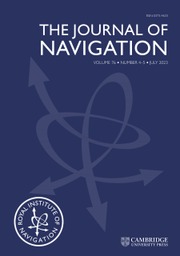No CrossRef data available.
Article contents
A study on the relationships between factors contributing to fishing vessel collision accidents and hull damage severity in South Korea
Published online by Cambridge University Press: 23 May 2025
Abstract
Among maritime accidents, fishing vessel collisions are particularly prone to both high frequency and severity. This study aims to identify the correlation between effective collision speed (Delta-V) and the severity of hull damage in fishing vessel collisions. Using data from collisions in South Korea, the study examines the influence of collision-related factors including Delta-V, collision location, collision subject, collision angle and the hull material of the impacted vessel on the extent of vessel damage. Statistical analyses and binary logistic regression were employed to assess trends and relationships between these variables. The findings confirm direct associations between hull damage severity and factors such as tonnage, collision location, the striking vessel and the extent of hull damage.
Information
- Type
- Research Article
- Information
- Copyright
- © The Author(s), 2025. Published by Cambridge University Press on behalf of The Royal Institute of Navigation


